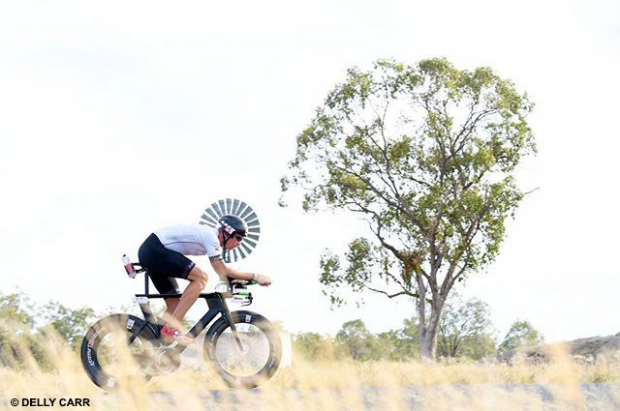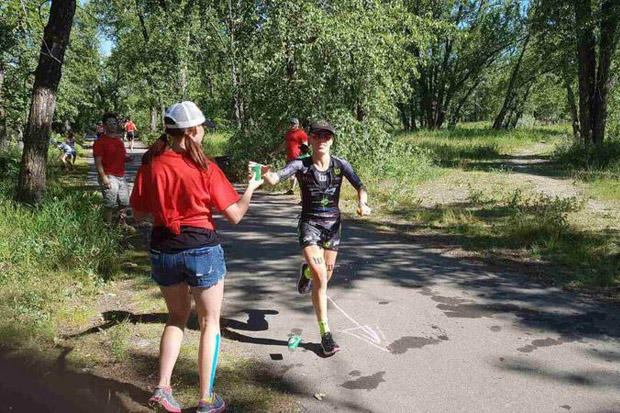The fast life of Josh Amberger
Aussie Josh Amberger has quite an impressive resume to his name and we expect to see much more from him. Last year as a rookie at the IRONMAN World Championships in Kona he moved into the limelight with an impressive swim and lead quite a while on the bike. In the end he finished 29th, but many lessons were learned. We followed up with him about his swimming and much more.
Slowtwitch: Thank you for your time.
Josh Amberger: Of course. Let’s kick this off
ST: What are you getting ready for as we speak?
Josh: I’ve got Ironman South Africa in a little under 6 weeks now. I’m looking forward to hitting this race again, as last years’ race in South Africa I took a big defeat but also celebrated my first Ironman finish. Now that I’m a year into the distance, I feel like I can prepare for it much better than last year, where I fully bombed out on the bike leg after trying to ride with Wurf, Hoffman and Frommhold on a sub-8 day. I had the Super League pilot race 2 weeks before IMSA last year, which unsurprisingly didn’t turn out to be conducive to long distance racing, so I look forward to having less distractions leading into the race this year.
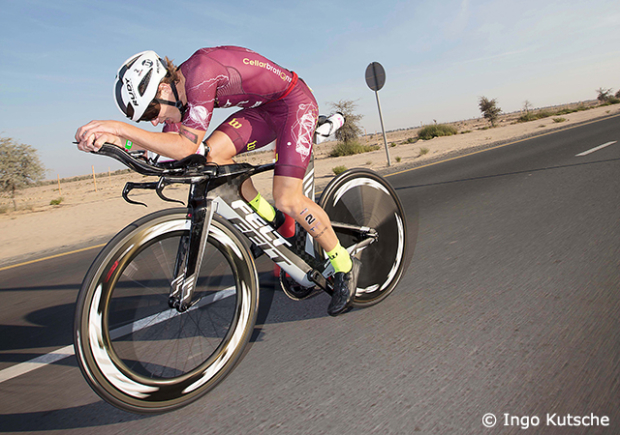
ST: No distractions?
Josh: It was great to be part of, but Super League just didn’t help the preparation for Ironman. It was a brutal 3 days of racing, and not possible to prepare for adequately as an Ironman athlete, training for and Ironman two weeks later. The whole idea of it though, apart from taking up the unique opportunity, was to develop some hardness against athletes much better than myself, and to just to be forced to deal with uncomfortable situations as best I could.
ST: I hear you, but I actually meant, are there no other distractions for you now. Along those lines, how much of the year are you based in Australia?
Josh: I’m here roughly 8-9 months of the year now. Now that I’m in my late 20’s I can afford to spend less time overseas because of the consolidated years of racing abroad when I was younger. In the early years, I wanted to make a name for myself against my competitors and in the industry as well. I could spend up to 6 months away from home, spanning the continents and racing different distances and formats. Now that I’m a bit more established, I can get away with shorter [times away], but you’ll still always find me racing all over the world. Aussies travel, and that will never change.
ST: Looking back at Geelong, you finished second behind Appleton. Did it feel a bit like Déjà vu?
Josh: It did & it didn’t. The result was the same, but I brought a better level of competition to the race this year than I did last year. Appo still managed to mute my advantage on the swim and bike, but my running has been improving each race over the last 12 months, so I felt like I was a more rounded athlete on the day. I used to race as a swim/biker, but now I feel as if my run game is lifting so that I can compete on all levels in triathlon.
ST: For folks not familiar with races in Australia, would you explain them what Hell Of The West is all about?
Josh: Hell of the West is a triathlon as old I am (est. in 1989), raced in the town of Goondiwindi, which is basically part of a large food bowl agricultural area out ‘West’. Maybe I’m wrong here, but I’m going to assume it’s the longest consecutive running (nearly) half-distance race that hasn’t been painted with the corporate Ironman brush at some point. It’s not quite a half-distance, but falls into the 2/80/20km bracket that you pretty much consider as half-distance anyway. It’s a 4-hour car drive from Brisbane, my hometown and nearest major city in Australia. It was funnily enough my first year doing the race. We set the event up as a primer for Ironman 70.3 Geelong, which was a couple of weeks afterwards, and all of my training squad raced. I’d never come into a race so fatigued before, and unsurprisingly I came away with 3rd place, behind training mate Max Neuman & Jake Montgomery. Not many readers will know Max, but he’s a good young talent, and Jake needs no introduction. So it was great competition. We finished the race and were put in the swimming pool by our couch hours later to squeeze a little more volume into the day, then we had a long drive home. You can fit a lot into a day when you start the race at 5am!
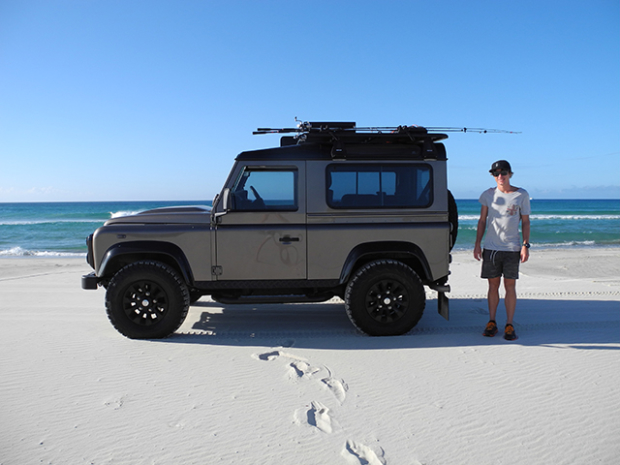
ST: How early do you get up for a race that starts at 5am?
Josh: Yeah that was a tough one. I think I set the alarm for about 3:15am. I never start training before 7am, so this was a real battle! Mostly, the early start proved challenging on the digestion front. Pardon the prose, but the start was too early for me to fully purge, and by the time I was running I was proper uncomfortable!
ST: Last year in Kona you put on quite a show – including but not limited to being first out of the water. I think I heard that being alone up front was somewhat of an accident.
Josh: The intention was always to swim fast, but not alone. The men’s race in Kona most often has a pedestrian paced swim, with little to nothing going on but a distinguishing of a very large front pack, and those that don’t make the front pack. This is fully understandable from the viewpoint that the bike and run courses present much more of a challenge and opportunity to win the race, and the swim is giving the least return on investment if you’re swimming beyond the front pack. My vision is to try and change that in some way, and to create a new front pack, and I think this was largely aspired to by a number of other key athletes last year that were looking for an early advantage as well. Any scenario that would make it more difficult for the riders like Sanders and Kienle to get back into the race, as well as to thin the ranks of the ‘old front pack’ was something I was looking for, but unfortunately I did end up by myself, and it had no effect on the race other than my own longevity on the day.
ST: But you still went for it?
Josh: Yeah, that’s typically how it goes down each race! Sometimes it works, other time it’s a disaster.

ST: Did you at all know where the other strong swimmers were?
Josh: It’s hard to know where anyone is in the open water. You can’t see much when you’re swimming, because your line of sight is mostly obscured by swell and the urgency of the race means you don’t want to waste a second trying to look around. The turning buoys normally give an opportunity to see the competition, but of course in Kona you’re turning around large boats. So I couldn’t see anyone. But I assumed I had a large lead, and with the effort I was putting in, I knew it would be growing.
ST: Once on the bike, can you describe what it was like with helicopters overhead, all those fans lining the street and media bikes buzzing around?
Josh: It was obviously really cool, but I didn’t feel much in the moment. There’s only a very small part relative to the long ride, where the crowds are lining the course, and I was probably too focused on settling into the ride to pay much attention to anything but my own processed and effort. Looking back now at some pictures of me going in and out of the Hot Corner, I can see that it was a pretty big deal and I am really proud that I was in that position. For the most part though, I couldn’t notice the helicopter. Although there was part in particular where it was dead ahead of me hovering on a top of a rise, and I was quite distracted by how epic the footage must have looked at that point
ST: Could you actually hear anything or was there just a lot of noise?
Josh: Mostly you just hear the drone of engine from the camera bike, or the sound of the wind everyone hears in the aero helmet!
ST: What wattage were you trying to hold?
Josh: I had a really good baseline effort from the ITU LD Worlds in Penticton 7 weeks earlier where I held career best power. I rode 20w better over the 120km distance than I had ever done in a 90km half-iron distance. I ended up holding this effort again for the first 3 hours on the bike in Kona, so my ride in terms of numbers was stellar at roughly 4.8-9 w/kg for this period. But really, this wattage is meaning nothing when you’re riding with foolish strategy. Even in career best bike fitness I couldn’t do any damage against the pack, and only really sealed my own fate towards the back of the race.
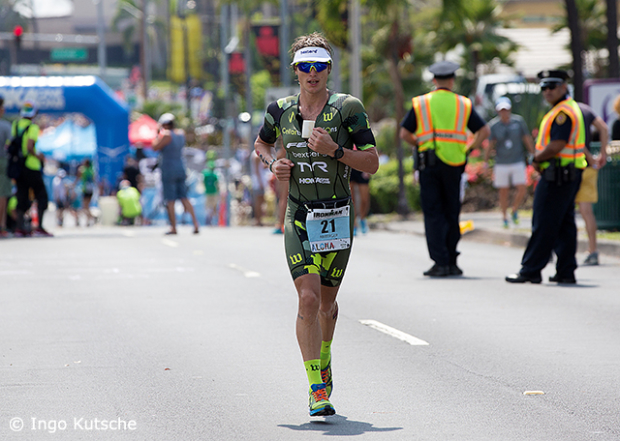
ST: As a rookie what actual expectations did you have for you from the race?
Josh: I just wanted a result. I had won the Ironman Asia-Pacific Championships in Cairns with a big course record just months earlier in only by 2nd Ironman race. But winning this race probably only increased my expectation in Kona. I believed I was in top 5, and wanted to be top 10 at the minimum. But that being said, I have not for once second felt bitter or disappointed in my end result (29th). I spent hours at the front of the race in my first ever Ironman World Championships, and for that I can’t be ashamed.
ST: You are consistently a superb swimmer but somehow I think you still surprised folks in Kona. Can you talk about your swimming background?
Josh: The short story is that I’ve been swimming my whole life, I’ve been told I had my first swimming lesson at 8 months old. I’ve probably spent no more than 6 weeks out of the water at any one time, and that was when I was 16 and had a foot in plaster with a fractured metatarsal. I swum so much as a kid that by the time I was 14 I wanted to be done with it, and transitioned to triathlon. I guess I’m lucky I was good at other sports, because most often than not, the kids that are done with swimming that don’t have sports talent elsewhere go hard into partying and undergo rapid lifestyle change. But I still loved, and probably always will love swimming. The feeling of moving fast through the water, and nailing long or hard swim sets is something that feels really satisfying to me. Swimming was obviously my gateway to triathlon, but also my gateway to competition and racing. I started racing when I was 5 or 6 years old, and have raced ever since. I love the opening paragraph of the book Krabbé’s ‘The Rider’, he makes a pompous yet apt distinction of the populous as he looks along a sidewalk before a race, declaring those that sat in cafes as ‘non-racers’. I like this line, because my swimming background definitely shaped me as a racer, and I’m not sure I would be a racer if I hadn’t grown up swimming.
ST: How much time do you now dedicate to swimming compared to cycling and running?
Josh: Probably more than would be expected. There’s a concept in triathlon that good swimmers should dedicate less time to swimming and either maintain or forego an advantage, to gain another one or lift their ability in cycling or running. I’ve never approached my training this way, and have always had swimming as a main component. With my new coach Cam Watt, we’ve taken this even further, and train the swim to an extreme level. We do this mostly for the aerobic component, but also to continue to try to find more ability in the water, even though I’m far from my best days swimming when I was in my late teens. Like short and middle distance racing in the last decade has seen a massive jump in the requirement of swimming ability, I hope to also lift the standard of swimming in Ironman racing.
ST: Could you maybe describe a week of swim training in mid season?
Josh: I swim 5-6 times a week. 5 of those session could be considered legitimate sessions, the odd number is normally a recovery float after a heavy run. Seldom am I swimming less than 5km. Not because I want to swim more, but coach doesn’t give me choice. A typical swim will see us in the water for 2 hours, and it will involve a short warm up of up to 1km and a longer main set of up to 4km. Sometimes this stretches to 4.8km. The rest can normally be made up of HVO’s (50m repeats with 10-15 strokes exploding off the wall, or deep water start). For the longer main sets I’m mostly swimming, but others in our squad will be doing the same sessions with paddles/pull/band or some combination of that. I actually swim slower when I ‘dress up’ with gear, as I’m not really a strength swimmer, but get my speed mostly through catch and body efficiency. I do have a big place for pull/paddles in my training program, but it’s mostly to fill gaps for my legs during heavy bike/run volume, or just when I feel like some variety. I don’t use any other gear, apart from an extreme pocket-laden drag suit or ‘lingerie’ as we call it.
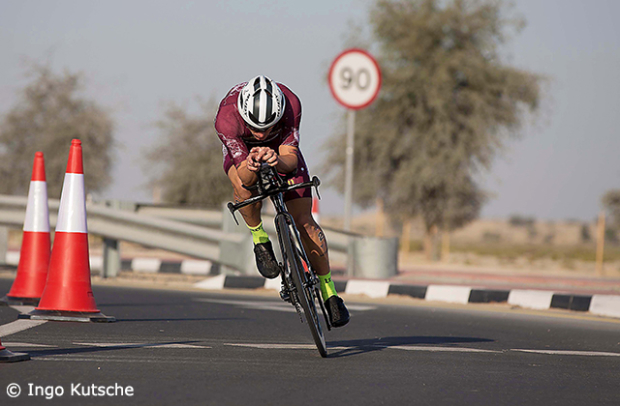
ST: What is the hardest swim practice you do?
Josh: I alluded to a 4.8km main set above, that’s pretty difficult. It’s basically 48x100m, varying from mid-rest to short-rest. Long sets like these are as mentally demanding as they are physically demanding. Not because it’s just plain difficult to get your head around doing 48x100m and enjoying it that, but because you’re actually engaging mentally the whole time trying to keep count of laps and time cycles. Apart from arrogant displays of pool etiquette in public lanes, there’s not many greater annoyances in the pool than being totally lost mid-session, with nil confidence as to how far you’ve swum or have left to go! Anyway, the session is done long course meters and as such;
1×100 on 1:40
2×100 on 1:25
5×100 on 1:20
6 times through
Sometimes if I’m feeling good I can take this down to 1:15 cycle, but it’s not the aim of the session to massage your ‘time cycle’ ego. It’s just about making the times feeling comfortable and smooth, and not teaching yourself to swim with lactic acid by over-swimming to keep up with someone else’s cycle. No one wants to do an Ironman and start the race trying to manage lactic acid buildup, so you should avoid training to do so. There’s a time and a place for anaerobic work, and this session isn’t it. The session is mostly about working being comfortable for the back end of an iron-distance swim leg, and training overall swim efficiency.
ST: Anything else we should know?
Josh: Here’s a data dump of stuff I like!
Best races: St Croix (rip), Wiesbaden (rip), Escape from Alcatraz, Jönköping, Penticton.
TV shows: Twin Peaks, The Mighty Boosh, The Thick of It.
Movies: Legends of the Fall, The Thin Red Line, Twin Peaks: Fire Walk With Me.
Bands: Summoning, Paysage d’Hiver, Caladan Brood, Midnight Odyssey.
Leisure: beer, Land Rovers, camping, fishing, foraging, coffee roasting.
Stuff I’d like to do after triathlon: ultra trail, brew beer, ride more bikes off-road, see more live music, snow sports.
Best advice: just be genuine.
You can follow Josh Amberger on Twitter via @joshamberger
Thanks for the interview!


